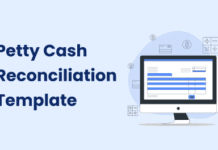SINGAPORE, OCTOBER 16th, 2024 — Peakflo organized a live panel session at the Accounting and Business Show 2024, featuring:
- Saurabh Chauhan, Co-founder and Chief Executive Officer at Peakflo
- Sandy Teo, Group Financial Controller, Carousell Group
- Fikri Ash Shiddiqie, Digital Transformation Consultant, Nomura Research Institute Indonesia
- Nicholas Paul, Head of Finance, Cove
Our esteemed panelists delved into the pressing topic of “The foundation for true automation! How enterprises can cut finance operation costs by 60%.” This crucial discussion aimed to shed light on streamlining finance operations, reducing costs, and building the foundation for sustainable automation.
Key Highlights
- What Are the Main Challenges That Enterprise Companies Face Within the Finance Function?
- How Does Automation Affect Large Organizations and Multi-Entity Companies?
- Automation Lowers Cost: Myth or Truth?
- How Does Change Management Look When Shifting or Re-Defining Processes?
- What Does the Future of Finance Look like with AI Advancements?
Challenges Faced by Enterprise Companies Within the Finance Function?
1. Invoice Validation and Document Matching:
Fikri mentioned, enterprise clients often struggle with verifying invoices and supporting documents such as tax invoices, delivery slips, purchase orders, and receipts. This manual cross-checking process is time-consuming, especially for large companies handling numerous transactions. In Indonesia, for instance, companies need to validate tax invoices meticulously for future audits. Errors in document alignment or missing records can create compliance risks and delay the invoice booking process.
2. Manual Reconciliation and Data Input:
Accounts Receivable and Accounts Payable teams often spend a lot of time on manual data entry and reconciliation, especially for large invoice volumes. In Indonesia, high transaction volumes require robust, efficient methods for invoice processing to meet month-end deadlines and avoid backlog. Without automation, these tasks are prone to errors, creating delays in monthly closing and impacting overall financial reporting timelines.
How Does Automation Affect Large Organizations and Multi-entity Companies?
1. AR Automation for Faster Collections and Reconciliation:
Automated AR processes streamline collections by integrating reminders and payment follow-ups directly into the system. For example, Peakflo’s integration with payment platforms like Xendit in Indonesia facilitates smooth, real-time reconciliation. Nicolas shared, they witnessed reduced Day Sales Outstanding (DSO) and a faster month-end close, as reconciliation no longer relies on manual input and confirmation. Peakflo’s automation also enables seamless payment tracking, reducing customer payment delays and improving cash flow accuracy.
2. Centralized AP Automation for Multi-Entity Companies:
Sandy mentioned, for multi-entity companies like Carousell, AP automation offers centralized processing across various subsidiaries, each with unique compliance requirements. Automation allows standardized workflows and approvals across regions, making it easier for leadership to monitor vendor payments and ensure regulatory compliance. AP automation also addresses challenges in multi-currency and multi-location invoice approvals, which reduces resource allocation and speeds up vendor payment processes.
3. OCR-Enabled Document Validation:
Optical Character Recognition (OCR) technology is employed for extracting data from invoices and supporting documents. This enables automated comparison of key fields (e.g., PO numbers, tax IDs, quantities) across documents, which reduces the need for manual validation. Fikri shared that clients upload invoices through Peakflo’s vendor portal, allowing the system to automatically validate and approve invoices with minimal human intervention, speeding up the AP process significantly.
Does Automation Truly Lower Costs?
The impact of automation on financial costs is significant, but how real is it? Can it truly reduce existing costs, or does it help more with scaling without adding incremental finance costs?
For Cove, Nicolas shared, automation has delivered tangible cost savings and efficiency. Key benefits include a drastic reduction in bad debt—from 5.7% to 1.5%—highlighting its direct financial impact. Additionally, Cove’s accounts receivable team was able to scale operations without a proportional increase in staffing, even as the business doubled its growth in just 18 months. Initially, the finance team represented 15% of the workforce, which has now reduced to 9%, proving that automation can support growth without adding significant labor costs.
Carousell’s experience echoed similar benefits especially given its decentralized finance structure and rapid growth through acquisitions, shared Sandy. Automation helped streamline complex, previously manual processes, like employee reimbursement. Pre-automation, Carousell’s payment and approval processes were so time-consuming that reimbursements took up to 16 days, requiring intensive manual entry and bank reconciliations. With automation, reimbursements now happen within just 2 days, boosting employee trust and operational efficiency.
For both Cove and Carousell, automation not only reduced immediate costs but also equipped them to scale sustainably, enhancing compliance and reducing process friction.
How does change management look when shifting or re-defining processes?
Shifting or re-defining processes during automation adoption can be both challenging and rewarding.
As discussed by Nicolas, Sandy and Fikri, key aspects to focus on include:
- Alignment with Organizational Needs
It’s essential to choose solutions that fit your specific business needs, whether you’re in a startup or an established enterprise. This ensures the solution is not only effective but also cost-efficient. Startups, for example, benefit from SaaS solutions that integrate seamlessly, avoiding costly custom API developments. - Overcoming Resistance and Ensuring Buy-In
While startups may not face significant resistance, larger organizations often struggle with leadership doubts and employee hesitancy. Clear communication about the benefits of automation and involving stakeholders in the process can help manage these concerns. Finding internal product champions is key to driving continued adoption. - Continuous Evolution of Processes
Implementation alone isn’t enough. Once the technology is in place, processes must continue to evolve to fully leverage automation. Organizations should ensure their teams stay engaged by regularly refining processes and not simply relying on initial successes. - Support from Flexible Vendors
A vendor’s willingness to develop customized solutions that fit the organization’s unique requirements is invaluable. Working with flexible partners can result in a solution that exceeds expectations, providing greater benefits than the core product initially offered. - Training and Development
To facilitate a smooth transition, organizations should invest in comprehensive training for staff to ensure they understand and adopt new systems.
The Future of Finance with AI: Vision for Tomorrow
As businesses continue to embrace automation, the next frontier in finance is the use of AI for decision-making support. According to finance leaders, automation is just the beginning. Once data is gathered and validated through automated systems, the focus will shift toward leveraging that data for strategic decisions at the management level.
The vision is clear: AI-based analytics will play a central role in enhancing decision-making processes. By automating repetitive tasks, AI frees up resources to focus on high-value activities. This progression will see AI not just performing tasks, but also offering valuable insights that can guide critical business decisions.
Sandy, emphasizes the potential of AI to eliminate manual data crunching. In the future, AI’s ability to analyze vast amounts of data and provide actionable insights almost instantaneously will be a game-changer. Imagine having detailed financial analysis ready for leadership the moment the books are closed. This would not only accelerate decision-making but also improve the accuracy and timeliness of strategic moves.
Ultimately, the future of finance is one where AI serves as both a tool for automation and a key enabler of smarter, data-driven decision-making. As organizations continue to adopt AI, the finance function will evolve from a process-driven operation to a strategic powerhouse, driving business growth with real-time insights and intelligent automation.









![Why AI Sales Calls Are Making Good Sales Reps Even Better [2025 Guide] ai sales calls](https://cdn-kmjmp.nitrocdn.com/YvtqmrsiHUxqerlSiZgbfzqqTARWTElr/assets/images/optimized/rev-834053b/blog.peakflo.co/wp-content/uploads/2025/09/65168cf6-3001-4733-8cbc-12d5684cf449-218x150.webp)

































